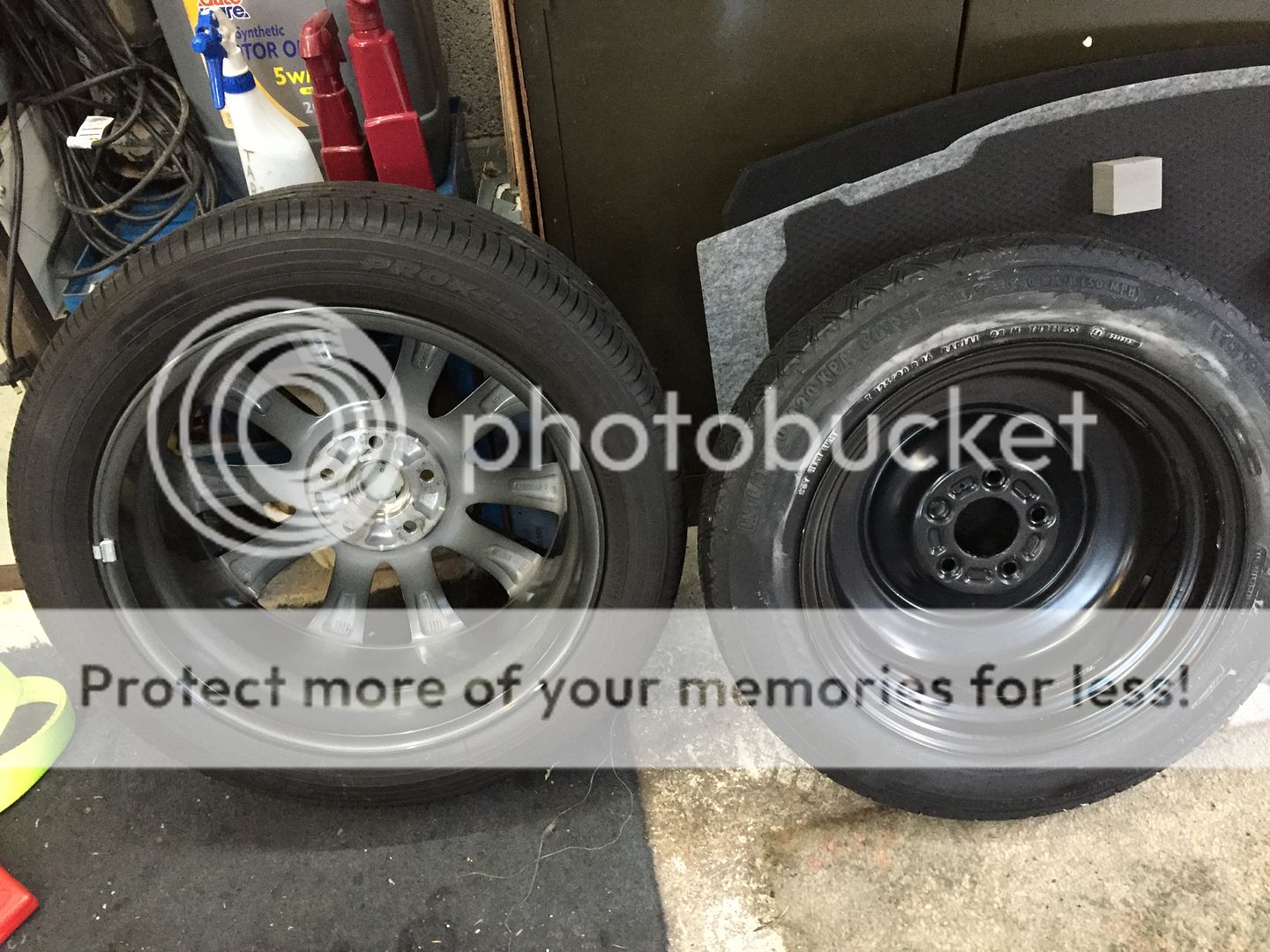Page 386 of the CX5 Manual section 7-6
Flat Tire
WARNING
Do not install the temporary spare tire
on the front wheels (driving wheels):
Driving with the temporary spare tire
on one of the front driving wheels is
dangerous. Handling will be affected.
You could lose control of the vehicle,
especially on ice or snow bound
roads, and have an accident. Move a
regular tire to the front wheel and
install the temporary spare tire to the rear.
Yes, I get this too but going off the discussion earlier in this thread then a tire that is 1/4 inch difference in rolling radius let alone 2 inches is going to cause big problems even if it is on the rear and of course you could expect safety systems to get confused with such anomalies but the suggestion is that a car with an odd tire cannot be used and this is what I dispute.
Or here is a great article from Tire Rack, that also cites some of the Automakers tire difference specs
Tire Rack are a tire vendor. They will never suggest that you should mix tires depths or brands and what is more, you’ve done exactly what I said not to do and quote the pointless comparisons to vehicles with a different AWD system. I don’t know what your point is from either.
Here is an excerpt from that article:
"Here are recommendations from some of the manufactures that Tire Rack currently serves for matching the tires used on their four-wheel drive and all-wheel drive vehicles. Additional recommendations from other Original Equipment Vehicle Manufacturers is pending.
Audi As published in their vehicle owner's manual, "rolling radius of all 4 tires must remain the same" or within 4/32-inch of each other in remaining tread depth.
Porsche Cayenne within 30% of the other tire on the same axle's remaining treadwear.
Nissan GT-R when replacing less than four (4) tires, each tire continuing in service must have at least 6/32 inch (5 mm) of remaining tread depth.
Subaru Within 1/4-inch of tire circumference or about 2/32-inch of each other in remaining tread depth. "
http://www.tirerack.com/winter/tech/techpage.jsp?techid=18

